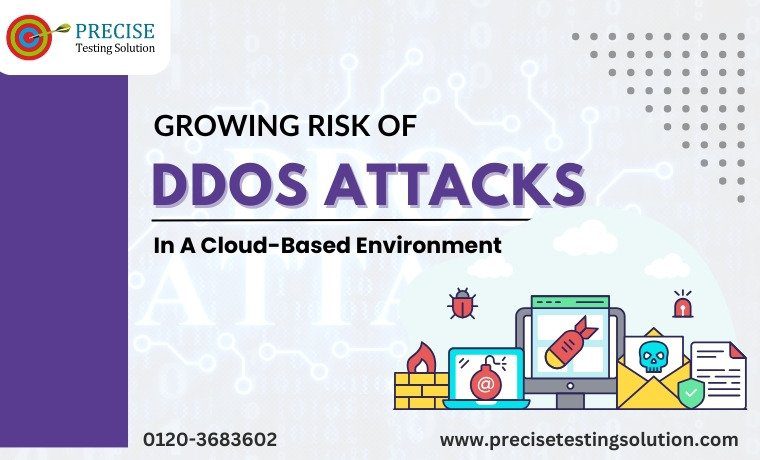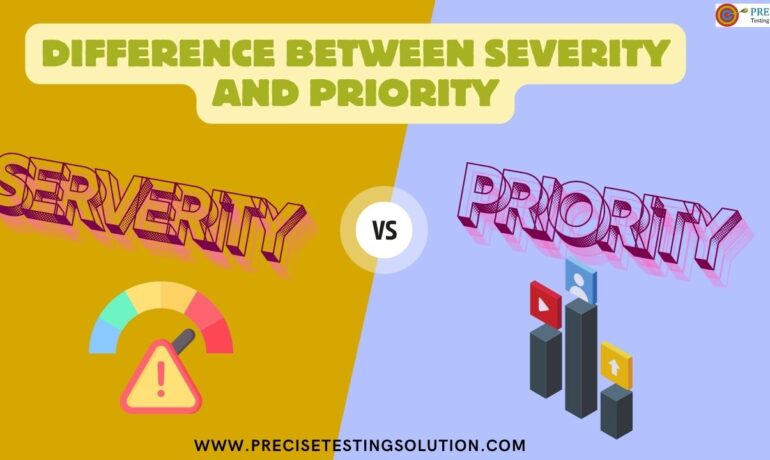Growing Risk of Cloud-Based DDoS Attacks
Through this article, we will be able to understand as to why DDoS Attacks are on the rise in cloud computing technology which have been adopted by many business organizations especially in the IT sector. The increased threat of DDoS attacks is only one of the problems that cloud-based businesses are currently dealing with. Basically, this article explains the effects of DDoS attacks on cloud computing and the counter cybersecurity measures that should be taken into account in order to combat against cloud-based DDoS attacks.
Let’s begin!
Impact of DDoS Attacks on Cloud Environment
A recent study on DDoS attacks in the cloud environment found that as the use of the cloud grows, the rate of DDoS attacks will also grow rapidly in the cloud environment. When the workload on an application increases, the cloud system will start providing computational power to withstand the additional load, which means the cloud system works against the attacker, but to some extent it also helps the attacker by allowing him to cause the most harm to the system’s accessibility, starting with one request at a time.

The fact that there is no “upper limit” on usage is the problem. Neighbor attacks, in which a virtual machine (VM) can attack another virtual machine (VM) in the same physical infrastructure and prevent it from providing its services, are another potential attack on a cloud environment. These attacks have the potential to harm other servers within the same cloud architecture as well as to negatively impact cloud performance and generate financial losses.
DDoS Attack on Cloud Computing Services
In the field of cloud computing, a wide range of DDoS attacks are emerging. Bandwidth-based and resource-based attacks are two of the main categories. Both kinds completely squander the network’s resources and bandwidth. It can be further classified into multiple categories depending on the exploited vulnerabilities.
1) Bandwidth-based Attacks:
By flooding the victim network with undesired traffic to block the genuine traffic from entering, this kind of DDoS attack uses up the bandwidth of the victim or target system.
The following subcategories of bandwidth depletion attacks exist: –
A) Flooding Attacks- With the aid of insurgents, the attacker launches this attack by sending a massive amount of traffic to the target, jamming up the victim’s network bandwidth with IP traffic. The victim system experiences quickly increasing network bandwidth saturation, which prevents genuine traffic from being able to access the network.
B) Amplification Attacks- A broadcast IP address receives a lot of packets from the attacker.
The malicious traffic is then generated as a result of the systems in the broadcast address range responding to the victim system. The broadcast address capability present in the majority of internet working equipment, such as routers, is exploited by this kind of attack. Using bots or an individual attacker, this type of DDoS attack can be launched. Smurf and Fraggle attacks are examples of this type of well-known DDoS attack.
2) Resource-based Attacks:
These types of DDoS attacks are done in order to exhaust the victim system’s resources so that genuine users are unable to access services.
Resource depletion attacks can take the following forms: –
A) Protocol Exploit Attacks– By taking advantage of a particular characteristic of the protocol that the victim has installed, these attacks seek to use the intended victim’s excess amount of resources. The most effective example of this kind of attack is TCP SYN. The PUSH + ACK attack, authentication server attack, and CGI request attack are more examples of Protocol exploit attacks.
B) Malformed Packet Attacks- The term “malformed packet” describes a packet that contains harmful data or information. To crash the victim, the attacker sends it these packets. The malicious packet is wrapped with the victim’s IP addresses of same source and destination, which causes havoc in the victim’s operating system that causes the system to slow down quickly.
Cybersecurity Measures to Avoid Cloud-Based DDoS Attacks
For preventing DDoS attacks, numerous cybersecurity solutions have been implemented and are continually being developed. Most DDoS attacks are motivated by an intruder trying to gain unauthorized access to the system or network of the victim.
Following are some of the precautionary cybersecurity measures which can be adopted by cloud-based business organizations in order to avoid DDoS attacks from happening: –
1) Ingress Filtering- The inbound packets with invalid source addresses are blocked by this process. Routers are employed for this. By using this method, the DDoS attack brought on by IP address spoofing can be stopped.
2) Egress Filtering- This method employs an outbound filter. With the help of this method, the network can be traversed by packets with legitimate IP addresses that fall inside the boundaries set by the network.
3) Route-Based Distributed Packet Filtering-In order to catch and filter packets with faked IP addresses and stop the attack, the filter leverages route information. Additionally, IP trace back employs it. However, it requires global knowledge of the network topology.
The Conclusion
Hence, from the above discussion, we can conclude this article by saying that many businesses have embraced the rapidly developing technology known as cloud computing. But there are several problems, one of which is the growing danger of DDoS attacks that could harm these businesses that rely on the cloud. Therefore, it is important for these businesses to be taken into account while choosing DDoS defense measures in accordance with their needs and requirements.
For more information, visit our website at www.precisetestingsolution.com or call our office @ 0120-3683602.
Also, you can send us an email at [email protected]
A Guide to Determining Severity Vs Priority Levels
In any project, especially in software development, bug tracking
What Is Pharming? A Comprehensive Guide to Protection and Prevention
What Is Pharming in Cybersecurity? Pharming is a sophisticated


